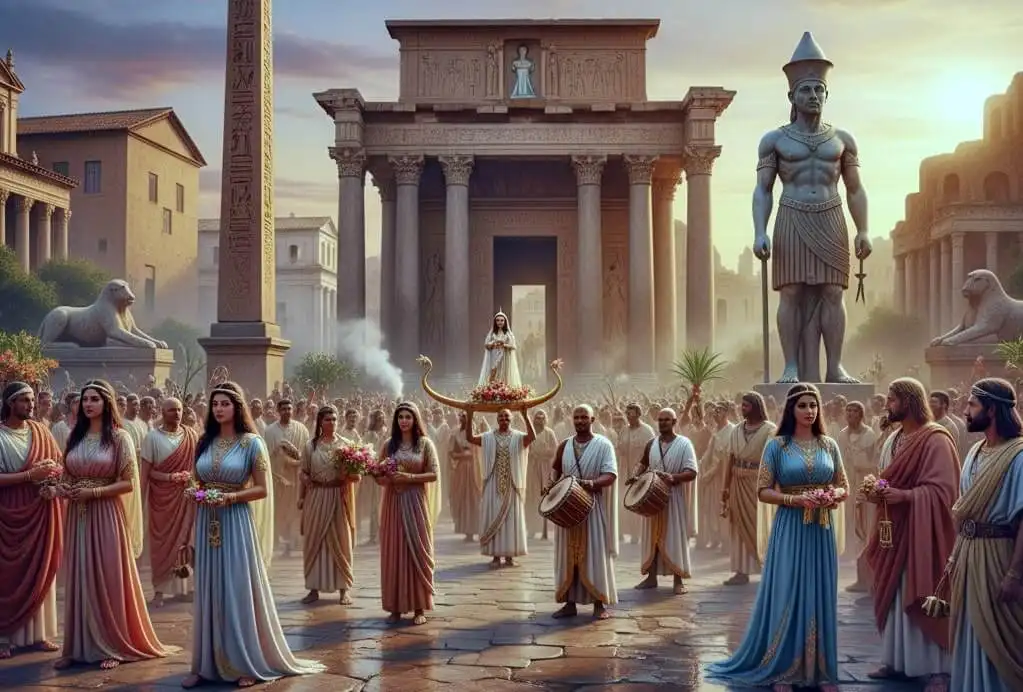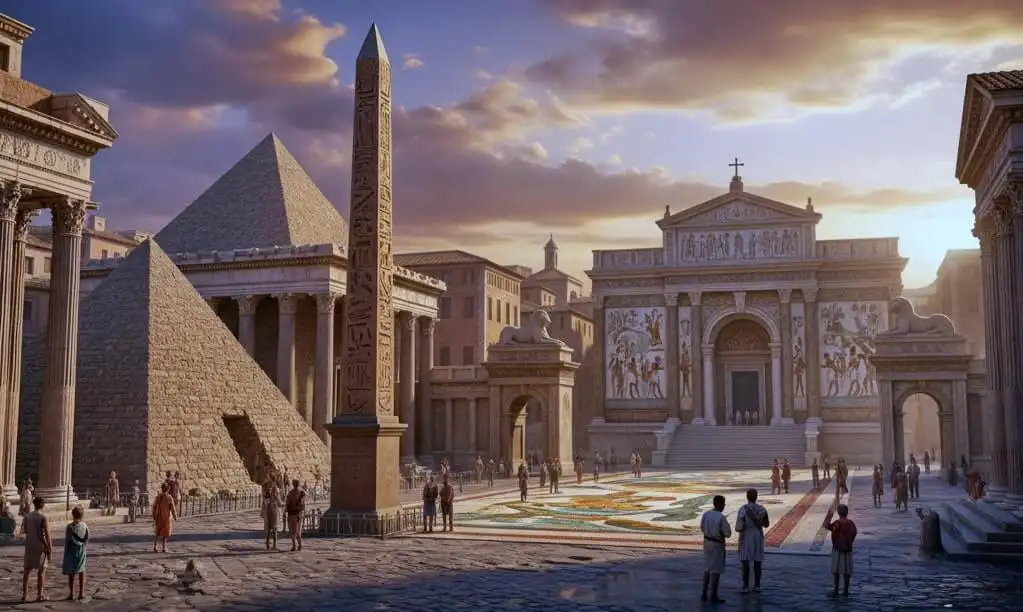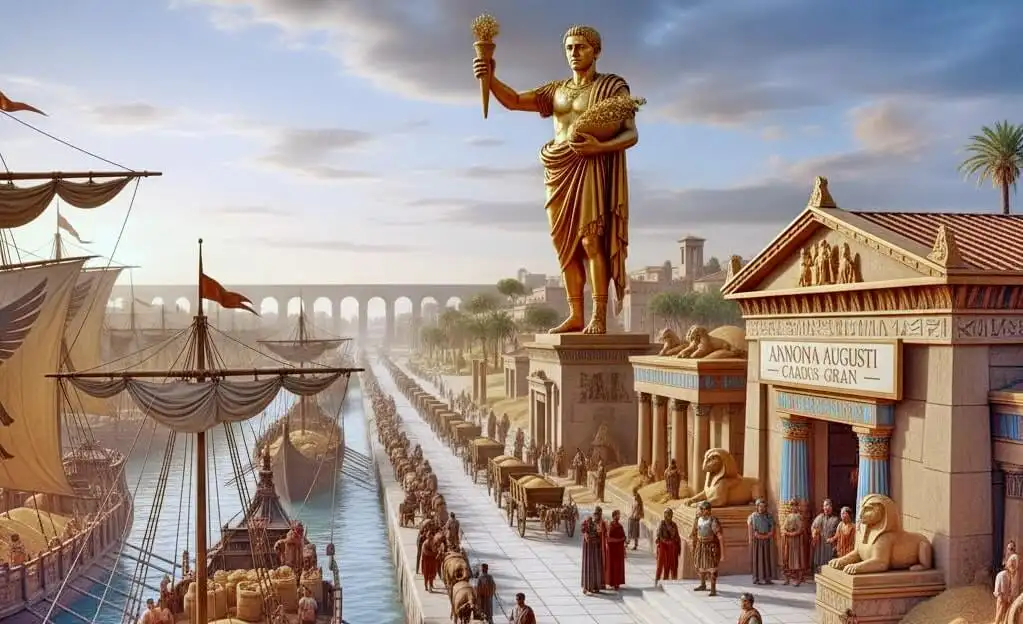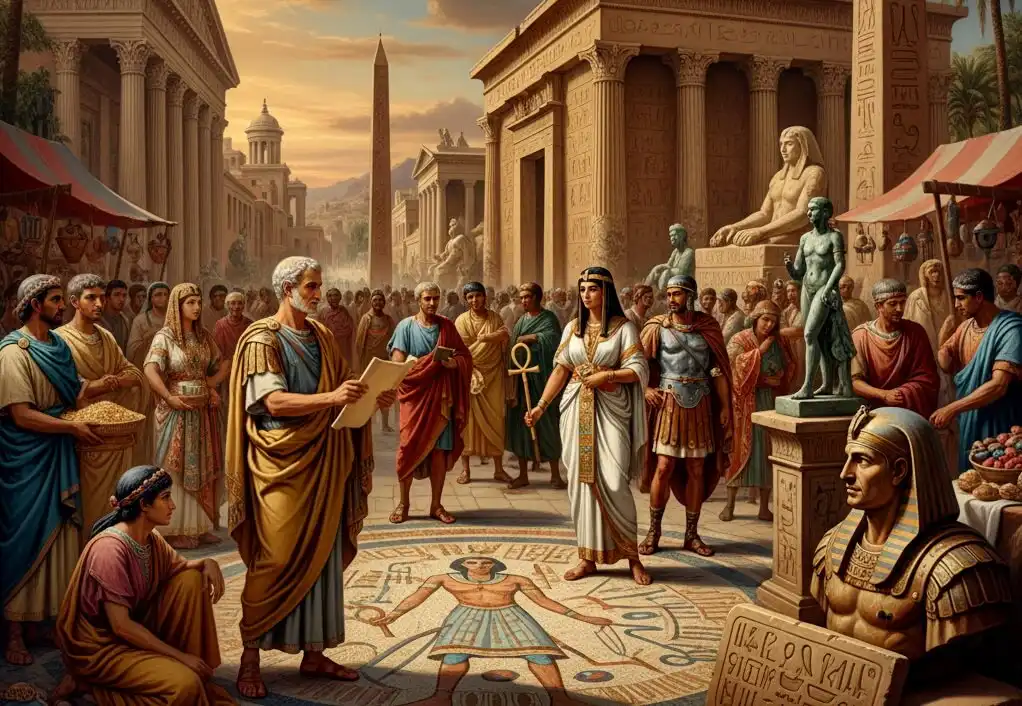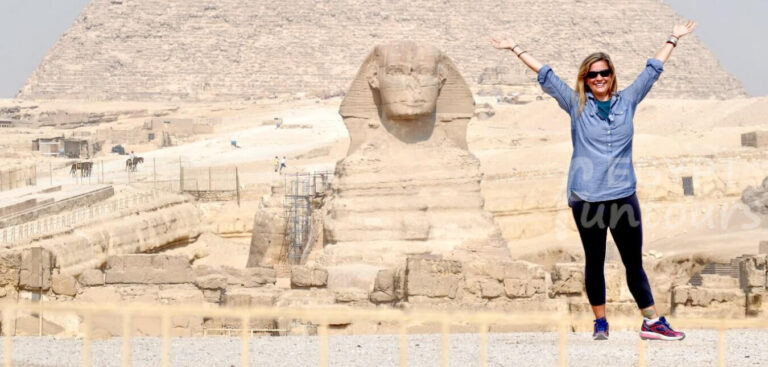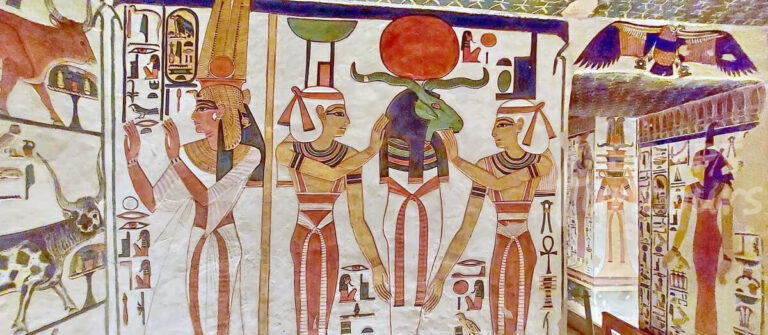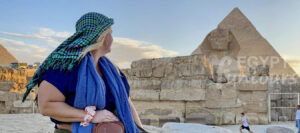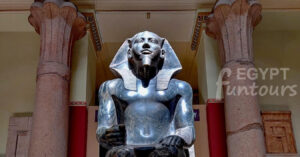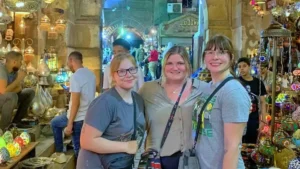The Profound Egyptian Impact on the Roman Empire
The Egyptian Impact on the Roman Empire was a profound and lasting cultural transformation that began after Rome’s conquest in 30 BCE. This widespread fascination, known as “Egyptomania,” influenced every facet of Roman life. In religion, the cults of Isis and Serapis gained immense popularity, offering a personal spirituality that contrasted with traditional Roman worship.
In architecture and art, Rome was transformed by the importation of obelisks as war trophies and the adoption of Egyptian motifs in mosaics and decorative arts. Economically, Egypt became the empire’s vital “breadbasket,” providing the grain that fed Rome’s population and cementing the emperor’s power. This multifaceted influence demonstrates that Egypt was not just a conquered territory but a powerful cultural force that reshaped the Roman world.


